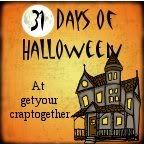It's a lot faster to machine-bind a quilt
(for tutorial click here), but of course the stitching remains on top of the binding and thus in plain view. That can be avoided with hand-finished binding, where the binding is attached to the front of the quilt with the machine and then finished on the back by hand.
What you need to do:
Cut your strips and join them together to have one long strip that measures at least about 20 inches more than the circumference of your quilt. Refer to the picture below for how to join the smaller pieces to one long strip.
Before attaching the binding to the quilt, iron the strip in half lengthwise, right side out.
Now place the strip along the edge of the front of the quilt with the raw edges of the strip facing outwards.
Attach the binding to the quilt with a simple straight stitch, sewing 1/4 of an inch from the edge of the binding / quilt. Start in the middle of any side of the quilt and leave about 10 inches of the strip unattached, you will need that later to finish the binding.
Sew all along the edge of the quilt. When you come to a corner proceed as shown below to create a mitered corner.
First attach the strip up to just 1/4 of an inch from the edge.
Then, without cutting the thread, turn the fabric and stitch backwards, until the needle leaves the quilt.
Now first fold the strip upwards in a 90° angle.
And then fold it back down along the edge of the quilt as shown below.
Move the quilt back under the needle and continue to sew as before 1/4 of an inch from the edge of tht quilt/binding.
Continue sewing until you reach your starting point. Stop sewing about 5 inches from the beginning of the seam and leave about 10 inches of the strip from the end of the seam. It should look like this:
Now you need to measure the two ends and sew them together so that they perfectly fit into the remaining opening.
To do that place them on top of each other along the edge of the quilt and mark the point where you want them to be joined.
Them place the two strips (open, not folded in half) right side to right side (to make sure the strips are not twisted, first attach them with a pin and make sure they fold and turn as they are supposed to) and sew them together diagonally just as you joined the strips earlier.
When everything is right, sew the two ends together, cut off the excess fabric and attach the last piece of the binding to the quilt.
OK, the front is done. Now fold the binding up on the front.
And over onto the back to cover the raw edge of the quilt.
Fold it onto the back so that it covers the stitching (the seam with which you attache it to the front).
Attach the binding to the back by hand. Insert the needle into the backing of the quilt just where the binding is supposed to finish and back out a little over to your left (or right, according to the direction you prefer to sew). With the same movement stick the needle through the very edge of the binding.
When you come to the corner attach the side you are working on just to the edge, then fold the binding over the corner and continue on the next side.
Finish to attach the binding all around the quilt.
This is what it will look like on the back.
While this is the binding seen from the front.
Have you made a project following this tutorial? Let me know what you
think. Did you like it? Was it easy to understand and to follow? Do you
have any suggestions?
Write a comment or send me an email using the contact form at the bottom of the page.
























































